Introduction to Morocco
A Land of Rich Culture and History
Morocco is a land where ancient traditions blend seamlessly with modern life, offering travelers a unique experience like no other. Nestled in North Africa, Morocco serves as a cultural crossroads, where Arab, Berber, African, and European influences intertwine. Its diverse geography stretches from the windswept Atlantic coast to the soaring Atlas Mountains and the vast, mesmerizing Sahara Desert.
For centuries, Morocco has been a magnet for explorers, traders, and adventurers. The rich tapestry of its history is woven with tales of ancient empires, sultans, nomadic tribes, and colonial powers. The architecture alone tells a vivid story: from the intricate mosaics and towering minarets of its mosques to the labyrinthine Medinas where time seems to stand still. As a trusted Morocco tours company, we help you explore this magical destination with expert-guided trips.
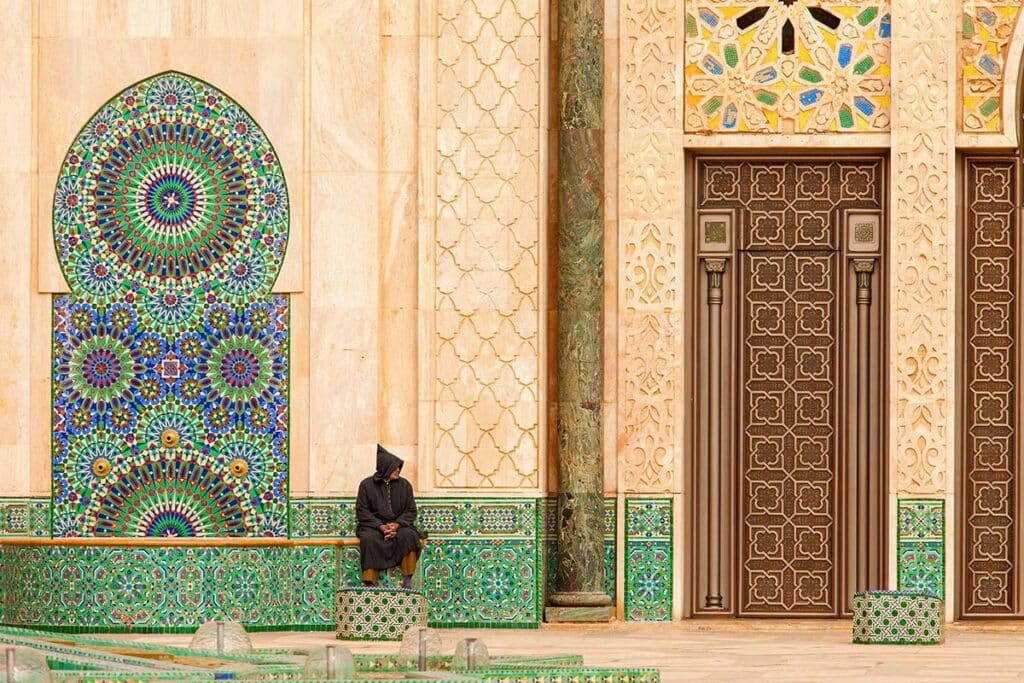
Visitors can walk through Roman ruins in Volubilis, explore the medieval alleys of Fes, or marvel at the majestic Koutoubia Mosque in Marrakech. Each city, village, and desert outpost has its own unique charm, steeped in centuries of history and cultural fusion.
Beyond its architectural wonders, Morocco’s culture is equally captivating. Music, art, cuisine, and craftsmanship are integral parts of daily life, offering travelers countless ways to engage with the local culture. Moroccan hospitality, known as l’hospitalité marocaine, is legendary, with locals often inviting visitors into their homes to share mint tea and lively conversation.
Why Morocco Should Be on Your Travel List
Why should Morocco be at the top of your travel bucket list? Simple: it offers something for every kind of traveler. Whether you’re an adventure seeker eager to trek through the Atlas Mountains or a history buff excited to wander the ancient streets of Fes, Morocco caters to all tastes.
The country’s diversity is one of its strongest draws. You can surf along the Atlantic coast in the morning and ride camels through the Sahara by evening. You can haggle for spices in a bustling souk, then relax in a tranquil riad adorned with hand-carved cedar wood and colorful tiles.
Morocco also boasts an incredibly rich culinary scene. From savory tagines to sweet pastries and refreshing mint tea, foodies will find their taste buds constantly delighted.
In terms of affordability, Morocco remains one of the more budget-friendly destinations compared to many other exotic locales. Accommodation options range from lavish five-star resorts to charming, affordable guesthouses.
Safety is another important consideration for travelers, and Morocco generally enjoys a reputation for being safe and welcoming, particularly for tourists who respect the local customs and laws.
For photographers and Instagrammers, Morocco is a visual feast. Every corner offers a new angle: vibrant markets, sun-soaked deserts, colorful pottery, and jaw-dropping landscapes that seem almost surreal.
Simply put, Morocco is not just a destination—it’s an experience. One that will linger in your memory long after you’ve returned home.
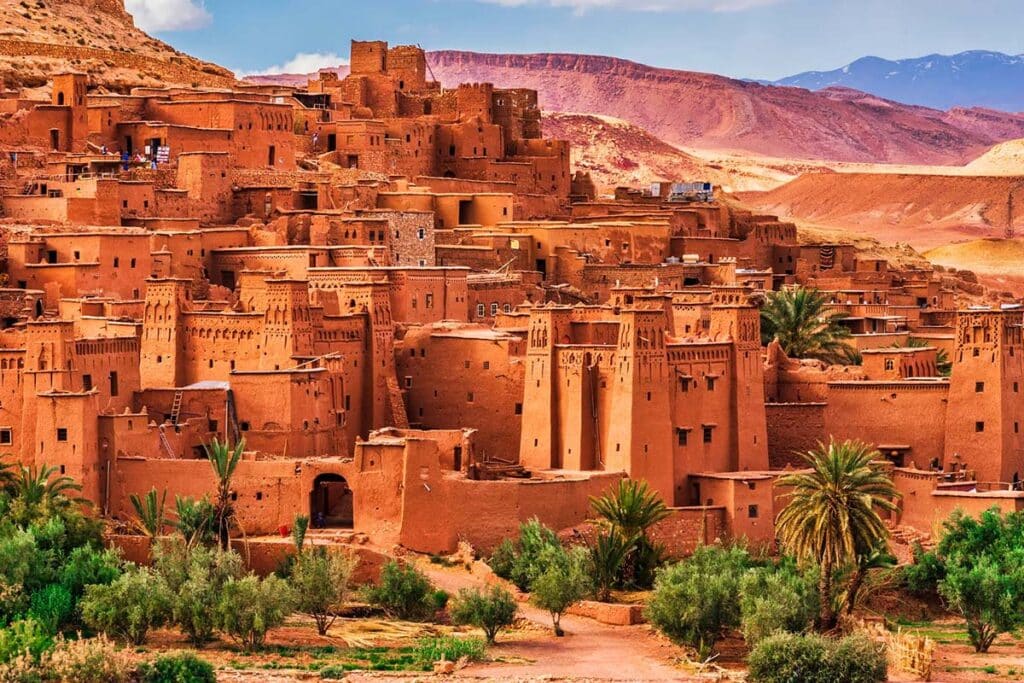
Planning Your Trip to Morocco
Best Time to Visit Morocco
Timing is everything when it comes to visiting Morocco. The country’s diverse geography means the weather can vary significantly depending on where and when you go. Generally, the best time to travel to Morocco is during the spring (March to May) and autumn (September to November). During these months, temperatures are pleasant, and the landscape is at its most vibrant.
Spring brings blooming wildflowers and comfortable temperatures perfect for exploring cities, trekking in the mountains, or venturing into the desert. Autumn offers similarly agreeable weather, making it ideal for sightseeing and outdoor activities.
Summers in Morocco can be hot, especially in the interior regions of Morocco like Marrakech, Fes, and the Sahara Desert. Temperatures can easily climb above 100°F (38°C), making daytime exploration challenging. However, coastal cities like Essaouira and Casablanca remain relatively mild due to the ocean breeze.
Winter (December to February) is generally mild along the coast and in the north but can be quite cold in the mountains and desert, especially at night. Snowfall is common in the High and Middle Atlas Mountains, offering unique opportunities for snow sports enthusiasts.
While choosing the best time to visit is important, it’s equally crucial to know how long you should stay to fully experience the country. If you’re considering an extended adventure, take a look at our 2-week Morocco tour for a perfectly paced two-week itinerary that balances cities, mountains, and desert experiences.If you’re wondering how to plan your itinerary, check out our full guide on how many days to spend in Morocco.
Entry Requirements and Visa Information
Most travelers will find that entering Morocco is relatively straightforward. Citizens from many countries, including the United States, Canada, the European Union, Australia, and New Zealand, do not require a visa for stays up to 90 days. However, it’s always advisable to check the most current entry requirements based on your nationality.
Your passport should be valid for at least six months beyond your planned departure date. Upon arrival, travelers may be asked to provide proof of onward travel and accommodation bookings, though this is rarely strictly enforced.
If you plan to stay longer than 90 days, you will need to apply for a visa extension or a residency permit through Moroccan authorities.
In light of global travel changes, it’s wise to check for any health or vaccination requirements before departure. COVID-19 protocols may also affect entry requirements, so consult your local embassy or the Moroccan Ministry of Foreign Affairs for the latest updates.
The detailed information about visa requirements is available at the end of this article.
Essential Travel Tips for First-Timers
Traveling to Morocco for the first time can feel a bit overwhelming, but a little preparation goes a long way. Here are some essential tips to help make your trip smooth and enjoyable:
- Learn a Few Key Phrases: While many Moroccans speak French and some English, learning a few words in Arabic or Berber can go a long way in earning smiles and good deals at the market.
- Dress Modestly: Morocco is a conservative country, and dressing modestly shows respect for the local culture. Lightweight, loose-fitting clothing is ideal for staying cool while being appropriately covered.
- Currency and Payments: The Moroccan dirham (MAD) is the official currency. Credit cards are accepted in larger establishments, but cash is king in markets and smaller towns. Always carry some small bills and coins.
- Stay Hydrated and Eat Smart: Tap water is generally not recommended for tourists; stick to bottled water. When eating street food, choose stalls that are busy and popular with locals.
- Negotiate with Respect: Bargaining is expected in souks and markets. Approach it as a friendly game rather than a battle; a smile often leads to better deals.
Before you travel, it’s a good idea to check the latest updates on entry requirements, travel advisories, and tourism highlights directly from Visit Morocco’s official tourism website.
Top Cities to Visit in Morocco
Marrakech – The Red City
Marrakech is often the first city that comes to mind when people think of Morocco — and for good reason. Known as “The Red City” due to its distinctive red sandstone buildings, Marrakech offers a vibrant, chaotic, and utterly captivating experience that leaves visitors spellbound.
At the heart of Marrakech lies Jemaa el-Fnaa, one of the most famous squares in the world. By day, it buzzes with snake charmers, fortune tellers, and juice vendors. By night, it transforms into a massive open-air food court, where sizzling grills and aromatic tagines fill the air with mouthwatering scents. The square pulses with life, music, and energy until past midnight.
Surrounding the square is the vast Medina, a UNESCO World Heritage Site. Here, narrow, winding alleyways lead to bustling souks where you can shop for everything from hand woven rugs and intricate lanterns to fragrant spices and colorful ceramics. Bargaining is not just accepted but expected, so hone your negotiation skills and enjoy the process.
Beyond the Medina, Marrakech offers architectural and cultural gems such as the Bahia Palace, known for its stunning tilework and peaceful courtyards, and the Majorelle Garden, once owned by Yves Saint Laurent, which provides a serene escape with its exotic plants and cobalt-blue accents.
For a more immersive experience, stay in a traditional riad — a Moroccan guest house centered around a peaceful courtyard — which offers an authentic and intimate glimpse into local life.
Marrakech is also a culinary paradise. From high-end restaurants to humble street stalls, the city serves up a delightful mix of Moroccan classics and innovative fusion cuisine. Don’t leave without trying a slow-cooked lamb tagine or sipping on fresh mint tea while people-watching from a rooftop café.
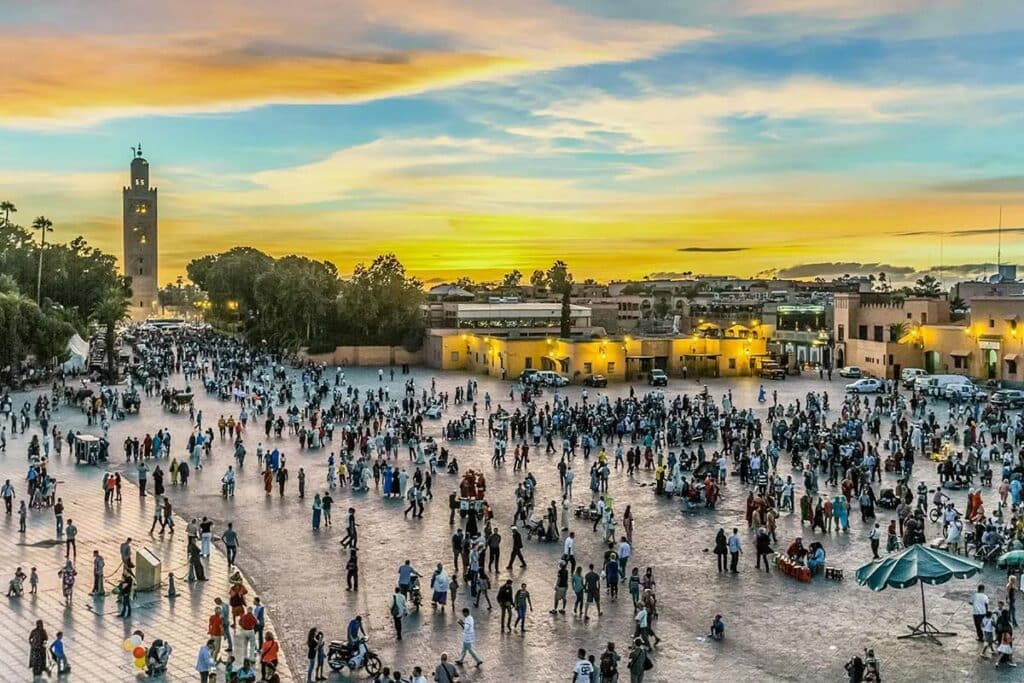
Fes – The Spiritual Heart
If Marrakech is Morocco’s beating heart, Fes is its soul. Often regarded as the cultural and spiritual capital of Morocco, Fes is home to the world’s oldest functioning university, Al Quaraouiyine, founded in 859 AD.
The city’s Medina, Fes el-Bali, is a labyrinth of over 9,000 alleyways, where getting lost is part of the adventure. The maze-like streets are filled with workshops, markets, mosques, and madrasas (Islamic schools). Craftsmen can be seen at work, preserving ancient traditions in pottery, metalwork, and leather tanning.
Speaking of leather, the Chouara Tannery is a must-visit. The colorful dye vats create a striking visual, and while the pungent smell can be overwhelming, vendors often offer sprigs of mint to make the experience more pleasant.
Fes is also known for its deeply rooted religious and scholarly traditions. The city’s mosques and Madrasas feature breathtaking examples of intricate tilework, carved cedar wood, and elaborate plasterwork that speak to Morocco’s rich artistic heritage.
Unlike Marrakech, Fes is less commercialized, offering a more authentic and sometimes raw experience of Moroccan life. It’s a city where traditions are deeply respected, and modern influences take a backseat, allowing visitors to step back in time.
Staying in a riad here is equally enchanting. Many are centuries old, meticulously restored, and offer views of the Medina’s rooftops and minarets.

Casablanca – The Modern Metropolis
Casablanca might not have the mystique of Marrakech or Fes, but it offers a different slice of Moroccan life — one that blends modernity with tradition. As the country’s economic and business hub, Casablanca showcases Morocco’s contemporary face while still preserving pockets of cultural heritage.
The city’s most iconic landmark is the Hassan II Mosque, one of the largest mosques in the world. Perched on the Atlantic coast, its minaret rises 210 meters into the sky. The mosque’s breathtaking architecture features intricate mosaics, marble floors, and a glass floor that allows worshippers to see the ocean below. Non-Muslims are allowed to take guided tours, offering a rare chance to step inside one of Morocco’s most magnificent religious sites.
Casablanca’s Corniche area offers seaside promenades, upscale dining, and vibrant nightlife, while the Habous Quarter (New Medina) provides a more traditional shopping experience without the overwhelming crowds found in other cities.
Though many travelers use Casablanca mainly as a transit point, spending a day or two here offers a fascinating glimpse into Morocco’s evolving identity as it balances its rich history with rapid modernization.

Chefchaouen – The Blue Pearl
Nestled in the Rif Mountains, Chefchaouen is often described as one of the most picturesque towns in the world. Known as The Blue Pearl, this small city captivates visitors with its blue-washed buildings, narrow cobblestone streets, and stunning mountain backdrops.
There are many theories behind the blue hue — some say it keeps mosquitoes away, others believe it symbolizes the sky and heaven. Regardless of its origins, the result is undeniably magical. Every turn offers a photo opportunity, making Chefchaouen a favorite among photographers and Instagram enthusiasts.
While the town itself is small and walkable, there’s plenty to explore. The central Plaza Uta el-Hammam is surrounded by cafés and shops, perfect for people-watching and enjoying local cuisine. Don’t miss the Kasbah Museum, which offers a small collection of artifacts and a tower with panoramic views.
For nature lovers, the nearby Talassemtane National Park provides hiking opportunities with scenic vistas, waterfalls, and rich biodiversity.
Chefchaouen’s relaxed atmosphere offers a perfect contrast to the hustle and bustle of larger cities, making it an ideal spot to unwind and soak in Morocco’s natural beauty.
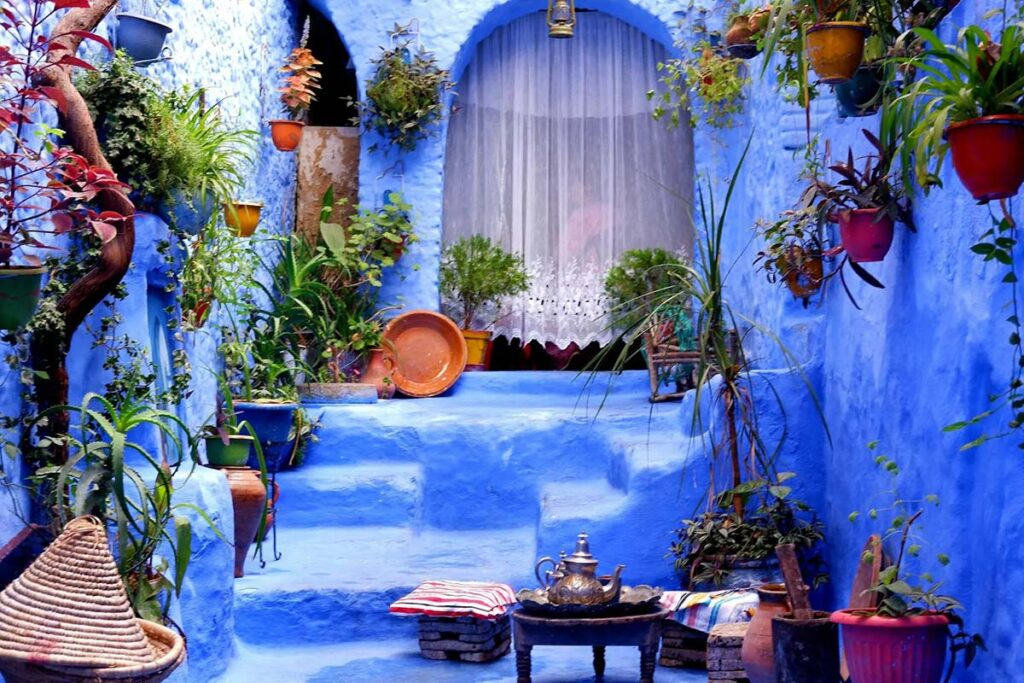
Essaouira – The Coastal Gem
Located on Morocco’s Atlantic coast, Essaouira offers a refreshing change of pace with its laid-back vibe, cool sea breezes, and charming old town. Historically known as Mogador, this UNESCO World Heritage-listed city is famous for its well-preserved 18th-century fortifications and vibrant arts scene.
The city’s Medina, though smaller than those of Fes and Marrakech, is a joy to explore, with wide alleys lined by artisan shops, galleries, and cafés. Essaouira is known for its skilled woodworkers who craft beautiful pieces from local thuya wood.
The port area is a hive of activity, with fishermen hauling in their daily catch and seagulls circling above. Fresh seafood is a highlight here — you can select your fish from the market and have it grilled on the spot for a truly authentic meal.
Essaouira’s consistent coastal winds make it a popular destination for windsurfing and kitesurfing. The wide, sandy beaches offer plenty of space for relaxation, while camel and horse rides along the shoreline provide a quintessential Moroccan experience.
With its blend of history, art, and seaside charm, Essaouira is a must-visit for travelers looking to experience Morocco’s coastal magic.
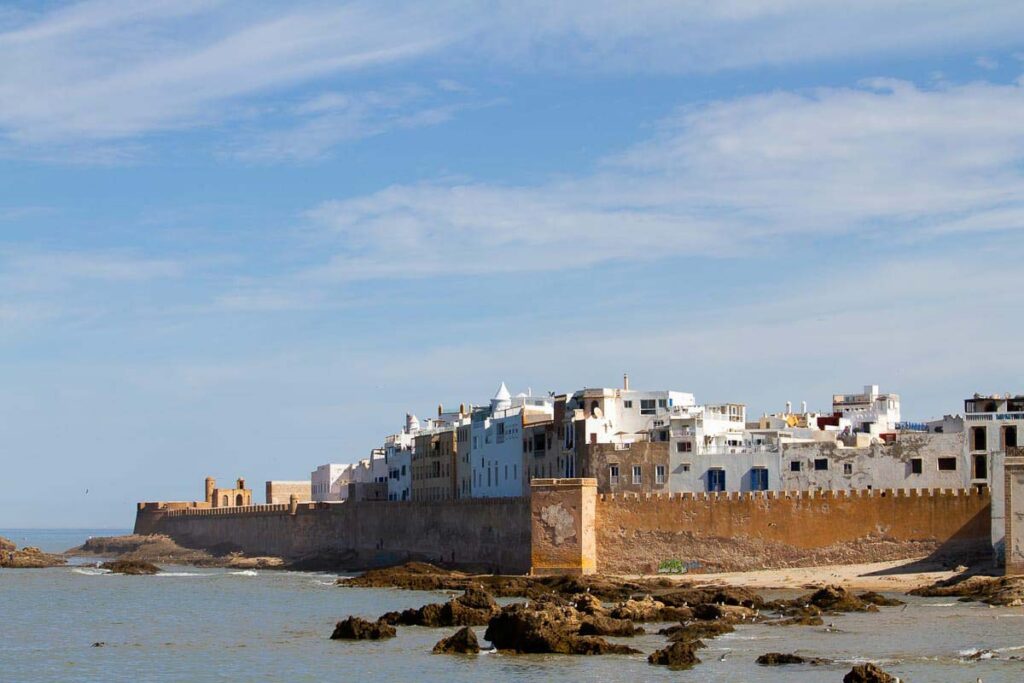
Must-See Attractions in Morocco
The Sahara Desert and Camel Treks
No trip to Morocco would be complete without venturing into the vast, golden expanse of the Sahara Desert. This iconic landscape of endless dunes, star-filled skies, and ancient caravan routes offers one of the most unforgettable experiences you can have in the country.
The two most popular gateways into the Sahara are Merzouga and Zagora. Merzouga is particularly famous for the towering Erg Chebbi dunes, which rise as high as 150 meters. These massive sand hills offer stunning panoramic views that change color throughout the day, from deep golds at sunrise to vibrant reds at sunset.
One of the best ways to explore the desert is on a camel trek. Riding a camel across the undulating dunes feels like stepping into a different era, reminiscent of the ancient trade caravans that once crossed these sands. Many tours offer overnight stays in traditional Berber tents, where you’ll enjoy authentic Moroccan meals, music under the stars, and the kind of silence that can only be found in the heart of the desert.
If camel riding isn’t your thing, 4×4 desert tours and sandboarding are other exciting options. Either way, witnessing the Sahara’s sheer scale and beauty is a humbling experience that many travelers describe as spiritual.
For photographers and stargazers, the desert offers unparalleled opportunities. The clear night skies, free from light pollution, reveal the Milky Way in all its glory — an awe-inspiring sight that stays with you long after you leave.
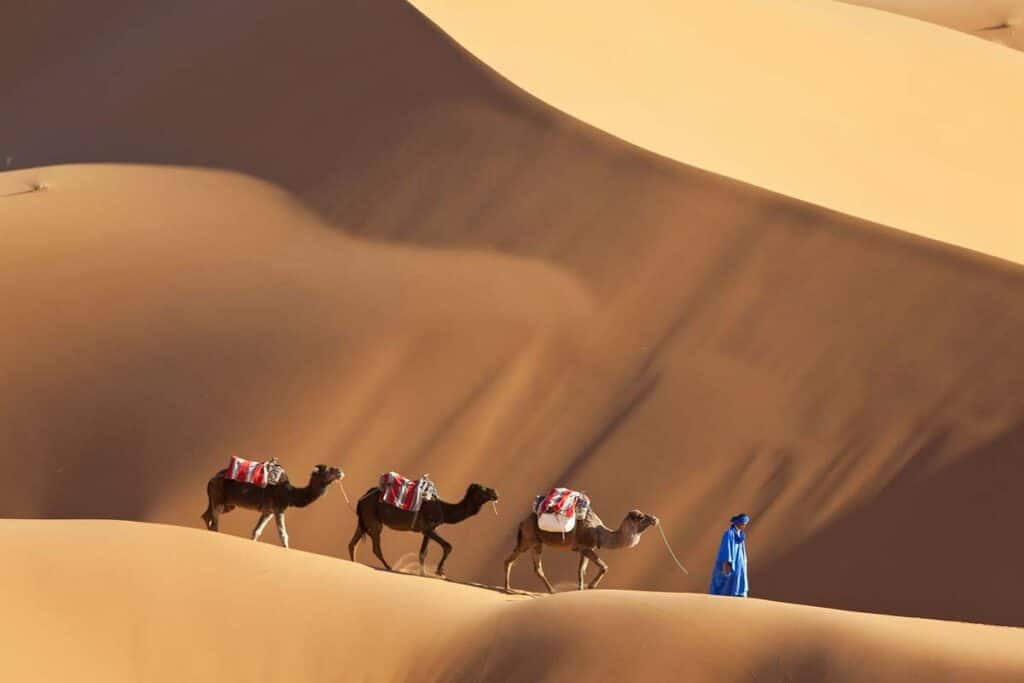
The Atlas Mountains and Hiking Adventures
Stretching across Morocco like a majestic spine, the Atlas Mountains are a haven for adventure seekers and nature lovers. These rugged peaks offer countless opportunities for trekking, climbing, and exploring picturesque Berber villages that have stood for centuries.
The most famous trekking destination is Mount Toubkal, the highest peak in North Africa at 4,167 meters (13,671 feet). Climbing Toubkal is challenging but accessible for reasonably fit hikers. The climb typically takes two days and offers breathtaking views over the surrounding mountains and valleys.
Beyond Toubkal, the Atlas range is divided into three regions: the High Atlas, the Middle Atlas, and the Anti-Atlas. Each offers its own unique landscapes and experiences.
- High Atlas: Home to snow-capped peaks and dramatic valleys. The village of Imlil is a popular base for many treks.
- Middle Atlas: Known for its cedar forests, lakes, and wildlife, including Barbary macaques.
- Anti-Atlas: Offers red rock formations, deep gorges, and fewer tourists, making it perfect for those seeking solitude.
Along your journey, you’ll encounter warm and hospitable Berber communities. Staying in a Berber guesthouse (gîte) allows you to experience traditional life, enjoy home-cooked meals, and gain insight into their ancient culture.
The Atlas Mountains are also stunning in winter, offering opportunities for skiing at resorts like Oukaimeden, not far from Marrakech.
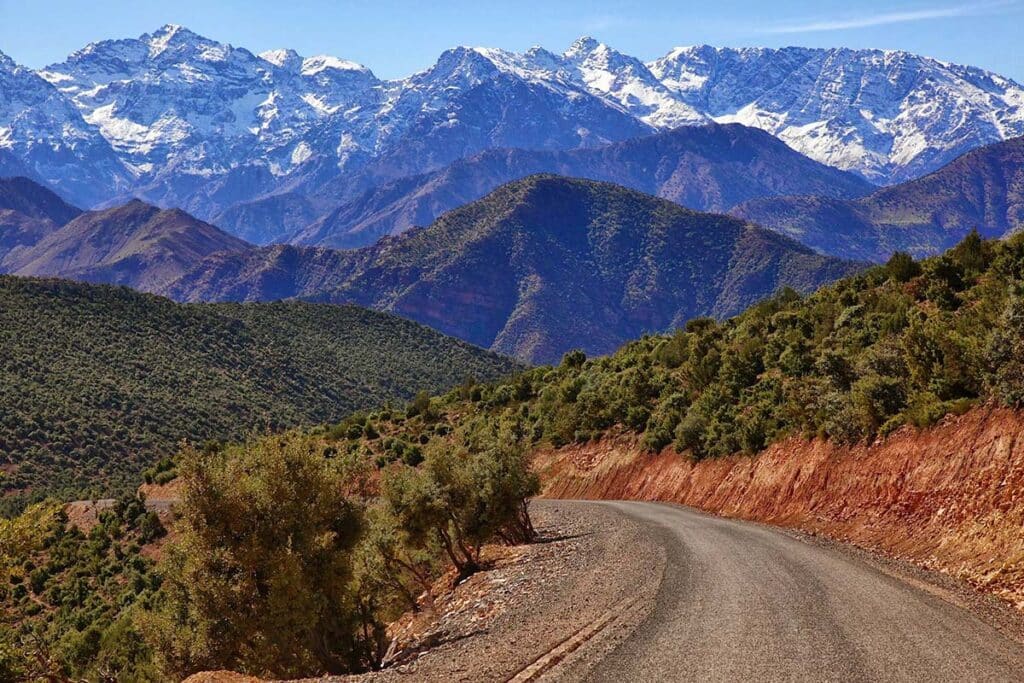
Historic Medinas and Souks
The Medinas of Morocco are at the heart of its historical and cultural identity. These ancient, walled cities date back centuries and are packed with narrow alleys, bustling markets, and architectural wonders that transport you to another time.
Each city offers its own distinctive medina experience:
- Fes el-Bali: The largest and oldest Medina in Morocco. Getting lost in its maze-like streets is part of the charm. You’ll discover ancient tanneries, mosques, and artisanal workshops around every corner.
- Marrakech: The Medina here is vibrant and energetic, with a mix of locals and tourists crowding the winding streets. Jemaa el-Fnaa is its beating heart, while souks radiate outward selling everything from spices to textiles.
- Chefchaouen: Known for its relaxed atmosphere and blue-painted streets, this medina is smaller but equally enchanting.
- Essaouira: Its Medina has a distinct seaside flavor, with whitewashed walls and narrow lanes that lead to the ocean.
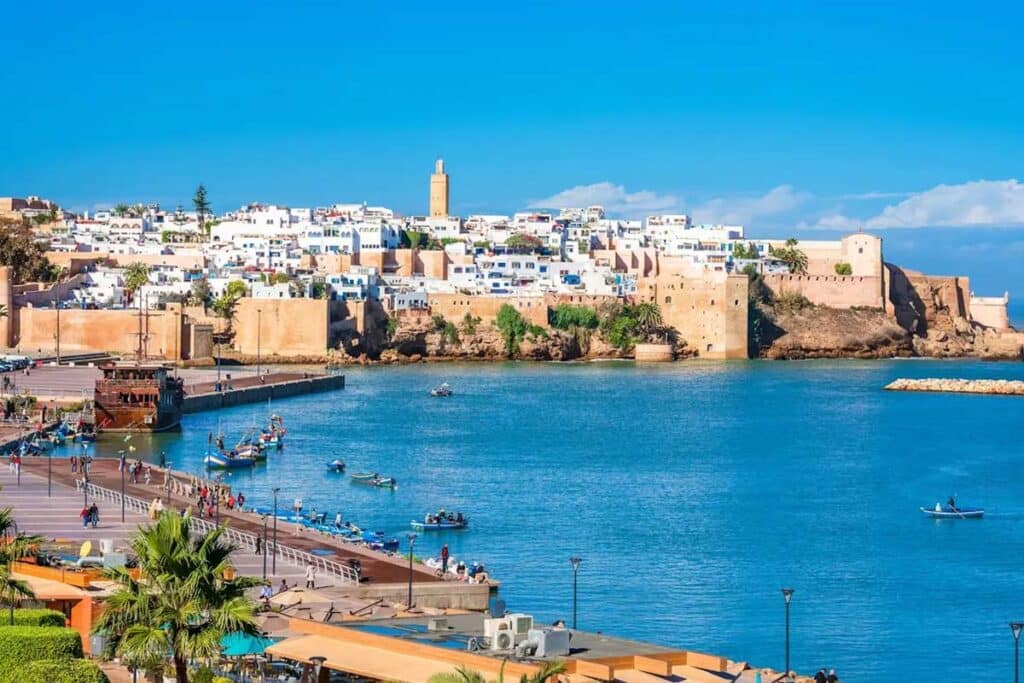
The souks (markets) within these Medinas are treasure troves for shoppers. Here, you can buy:
- Handwoven rugs
- Leather goods
- Traditional pottery
- Lanterns
- Spices and herbs
- Argan oil
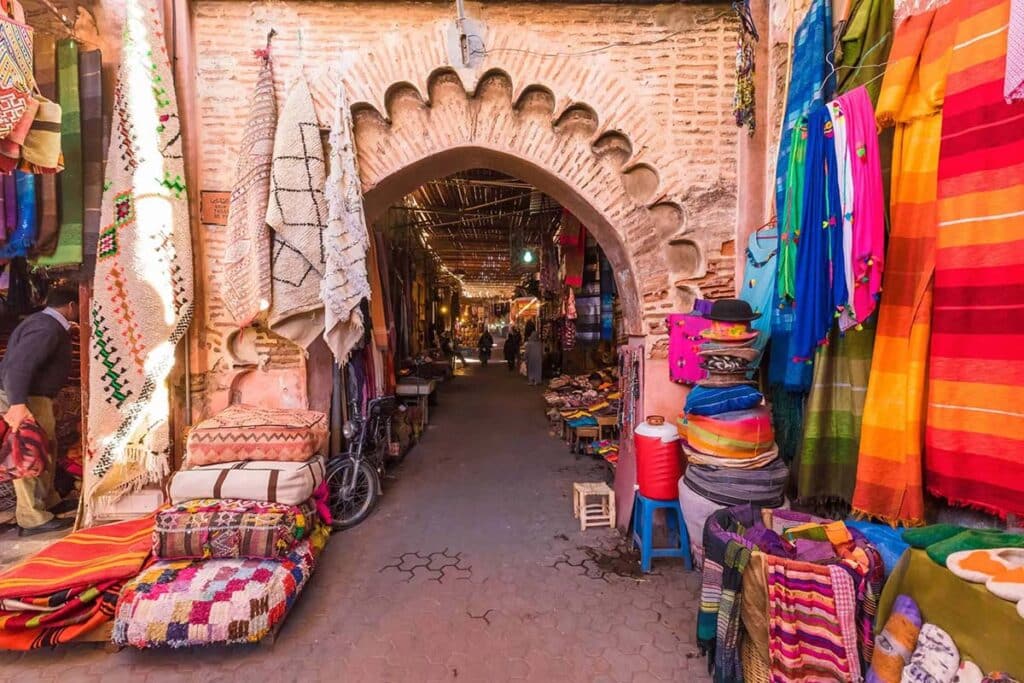
Shopping in Moroccan souks is as much about the experience as it is about the purchase. Bargaining is expected, and the process is often light-hearted and fun. Just remember to be respectful and patient — a good attitude can often score you a better deal.
Morocco is packed with incredible sights and experiences that cater to every type of traveler. If you’re looking for more ideas and detailed recommendations, check out our full guide on things to do in Morocco to help you plan an amazing trip.
Moroccan Cuisine and Food Culture
Traditional Dishes to Try
Moroccan cuisine is a rich blend of flavors, colors, and textures, influenced by Berber, Arab, Mediterranean, and French culinary traditions. Eating in Morocco isn’t just about satisfying hunger — it’s a full cultural experience where meals are prepared with love, shared with family, and accompanied by hospitality that makes you feel like part of the community.
One of the most famous Moroccan dishes is tagine, named after the conical clay pot it’s cooked in. A tagine can be made with lamb, chicken, beef, or fish, and it often includes vegetables, olives, dried fruits, nuts, and a complex blend of spices like cumin, coriander, ginger, saffron, and cinnamon. The slow cooking process allows the flavors to meld perfectly, creating a savory, aromatic dish that’s impossible to resist.
Another must-try is couscous, often served on Fridays, which is the Muslim holy day. This fluffy semolina dish is usually topped with a medley of vegetables, chickpeas, and tender chunks of meat. Traditional couscous is steamed multiple times, giving it a light, airy texture that pairs beautifully with the rich broth poured over it.
For street food lovers, b’stilla (pastilla) offers a unique experience. This savory-sweet pie combines layers of flaky pastry filled with pigeon or chicken meat, almonds, eggs, and spices, dusted with powdered sugar and cinnamon. The combination of sweet and savory flavors might seem unusual, but it perfectly captures the Moroccan palate.
You should also sample harira, a hearty soup made with tomatoes, lentils, chickpeas, and lamb. It’s commonly served during Ramadan to break the fast and is often accompanied by sweet dates.
Don’t forget to taste maakouda (fried potato cakes), brochettes (meat skewers), kefta (spiced ground meat), and the wide variety of fresh seafood available, especially in coastal cities like Essaouira and Agadir.
Vegetarians will also find plenty of options, as Moroccan cuisine makes liberal use of vegetables, legumes, and flavorful herbs.
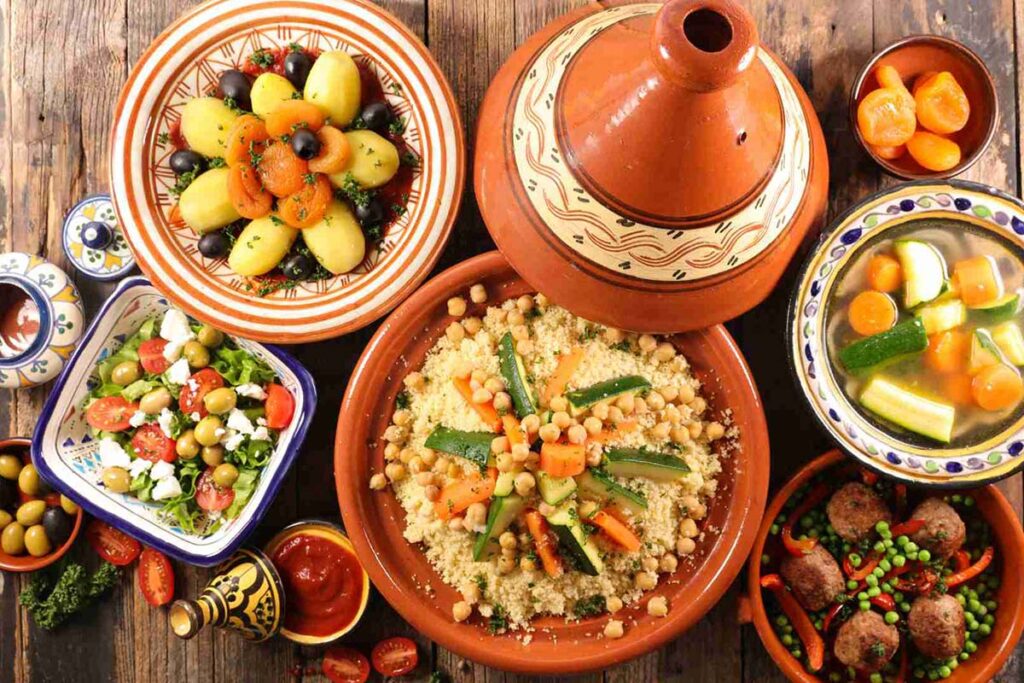
The Art of Moroccan Tea
Tea in Morocco is far more than just a beverage — it’s a symbol of hospitality, friendship, and tradition. The famous Moroccan mint tea, or atay, is prepared with green tea (usually Chinese gunpowder tea), fresh mint leaves, and a generous amount of sugar.
The preparation itself is a bit of an art form. The tea is poured from a height into small, decorated glasses, creating a frothy top. This technique isn’t just for show; it actually helps aerate the tea and mix the flavors evenly.
Tea is typically served before or after a meal, and it’s common to be offered a glass when visiting someone’s home, shop, or even during negotiations at the market. Refusing tea can sometimes be seen as impolite, so even if you only take a few sips, it’s a gesture of respect to accept the offer.
Moroccan tea ceremonies can be leisurely affairs, encouraging conversation and connection. The act of drinking tea together breaks down barriers and serves as a beautiful example of the country’s emphasis on warm, personal interactions.
Pair your tea with traditional Moroccan pastries like chebakia (sesame and honey cookies), ghriba (almond cookies), or sellou (a sweet, nutty mixture often served during special occasions), and you’ll get a true taste of Morocco’s sweet side.
Accommodation Options in Morocco
Riads – A Unique Moroccan Experience
One of the most charming aspects of traveling in Morocco is the opportunity to stay in a riad — a traditional Moroccan house or palace with an interior courtyard or garden. These unique accommodations offer an intimate, authentic experience that can’t be found in typical hotels.
Riads are often tucked away within the Medinas, hidden behind plain, unassuming doors. But once inside, you’re transported to a peaceful oasis with beautiful architecture, intricate tilework, carved wood, and lush greenery. Many Riads feature fountains, rooftop terraces, and cozy lounges where you can relax with a cup of mint tea after a day of exploring.
Because they are smaller, riads offer a more personal level of service. Many are family-run, and the hosts often go out of their way to make you feel at home, offering homemade meals, local tips, and assistance with tours or transportation.
Riads vary in luxury, from budget-friendly options to opulent boutique stays with spa services, pools, and gourmet dining. No matter your budget, staying in a riad allows you to experience Moroccan hospitality at its finest and connect more deeply with the local culture.
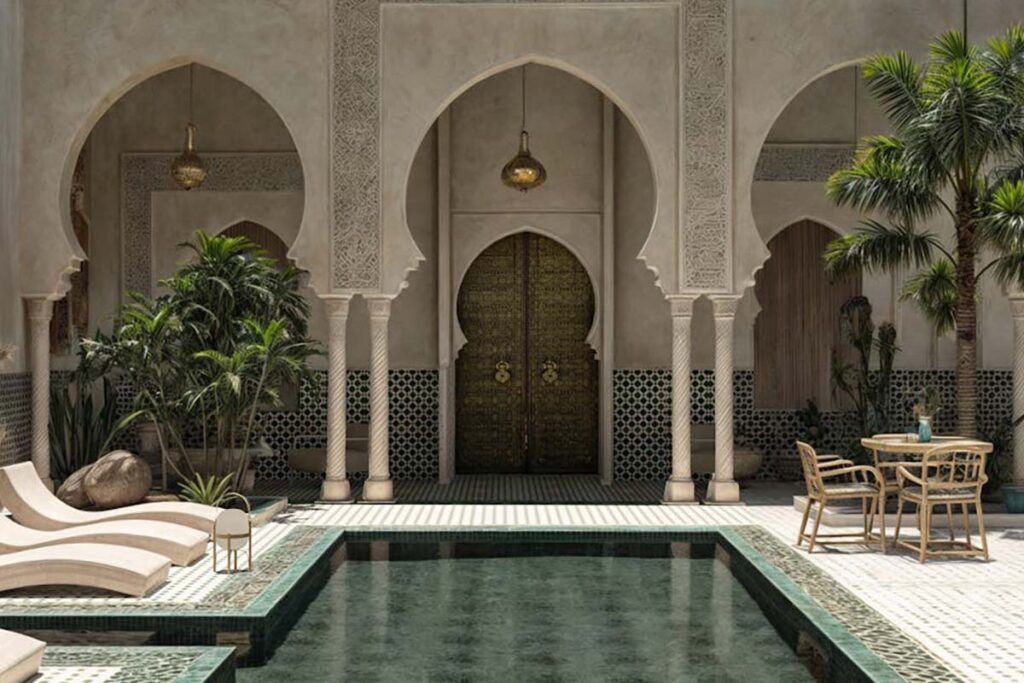
Budget Hotels and Luxury Resorts
Morocco caters to every type of traveler, offering a wide range of accommodation options beyond riads.
Budget Hotels and Hostels:
For backpackers and budget travelers, Morocco has plenty of affordable hotels, hostels, and guesthouses. Cities like Marrakech, Fes, and Chefchaouen offer dormitories and private rooms at reasonable prices. Many budget accommodations include breakfast and Wi-Fi.
Mid-Range Hotels:
If you’re looking for more comfort without breaking the bank, mid-range hotels provide modern amenities like air conditioning, private bathrooms, and sometimes pools or rooftop terraces. These hotels often balance convenience with local charm and are great for families or couples.
Luxury Resorts and International Chains:
In cities like Casablanca, Agadir, and Marrakech, you’ll find high-end resorts and internationally recognized hotel brands offering world-class luxury. These establishments feature spas, fine dining, golf courses, and private beaches, making them ideal for travelers seeking indulgence and relaxation.
Desert Camps:
For a truly unique experience, consider spending a night in a luxury desert camp in the Sahara. These camps offer spacious tents with comfortable beds, en-suite bathrooms, and gourmet meals — all under the star-filled desert sky.
No matter where you choose to stay, Moroccan accommodations often reflect the country’s unique aesthetic and warm hospitality, turning even a simple overnight stay into a memorable part of your journey.
Getting Around Morocco
Morocco offers a well-connected and affordable public transportation system that caters to locals and tourists alike. One of the most popular means of travel between cities is by train, operated by ONCF (Office National des Chemins de Fer). Trains are reliable, clean, and economical. The rail network connects major cities like Tangier, Casablanca, Rabat, Fez, and Marrakech, with high-speed trains (Al Boraq) available between Tangier and Casablanca, and soon to Marrakech, reducing travel time significantly.
For travel where trains don’t reach, long-distance buses are the next best option. CTM and Supratours are the two main companies, known for punctuality and comfort. These buses connect smaller towns and cities and are usually air-conditioned. Local buses within cities are very cheap but can be crowded and confusing for first-time visitors.
Petit taxis (small taxis) operate within city limits and are color-coded depending on the city. They’re metered, but in some cases, you might need to negotiate the fare. Grand taxis (shared large taxis) operate between towns and are ideal for short intercity routes.
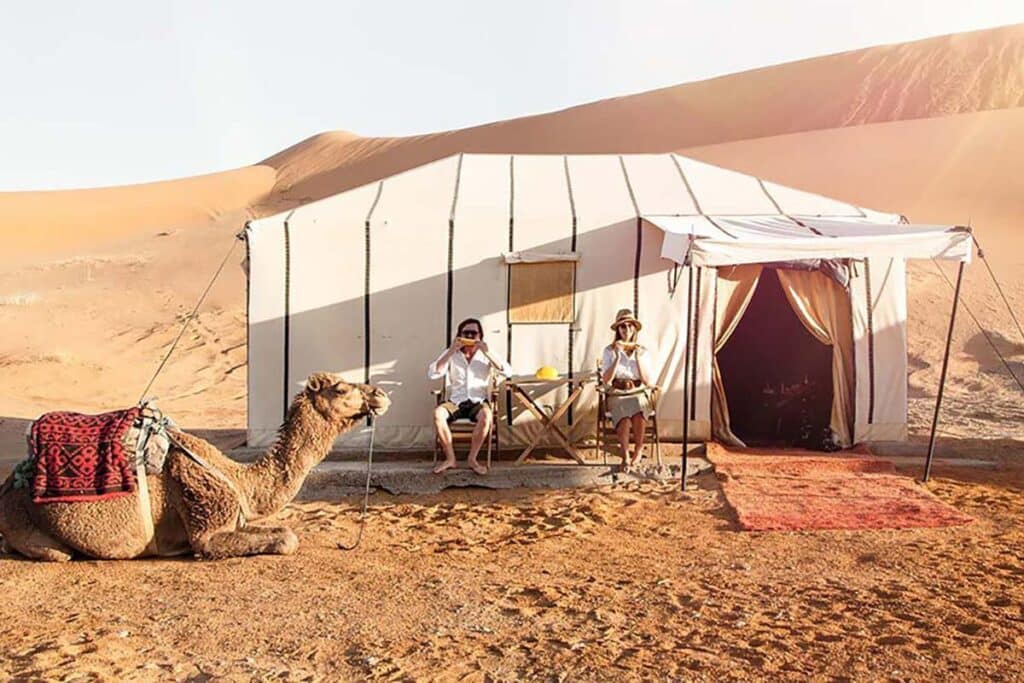
Renting a Car vs. Hiring a Driver
If you’re seeking more flexibility, renting a car is a convenient option—especially for exploring remote regions like the Atlas Mountains or the Sahara Desert. Morocco’s roads are generally in good condition, and signage is available in Arabic and French. However, driving in busy cities like Casablanca or Marrakech can be chaotic, with aggressive drivers and limited parking.
An alternative to self-driving is hiring a private driver. This option offers the luxury of comfort without the stress of navigation. Drivers are usually locals with extensive knowledge of the routes and cultural insights, often doubling as informal guides. It’s a bit more expensive than renting a car but provides a worry-free experience, especially if you’re unfamiliar with the language or traffic laws.
Whichever option you choose, be sure to carry a valid international driver’s license, and always inspect the vehicle for damage before renting. Fuel is relatively inexpensive compared to Europe, but rural gas stations can be sparse—plan accordingly.
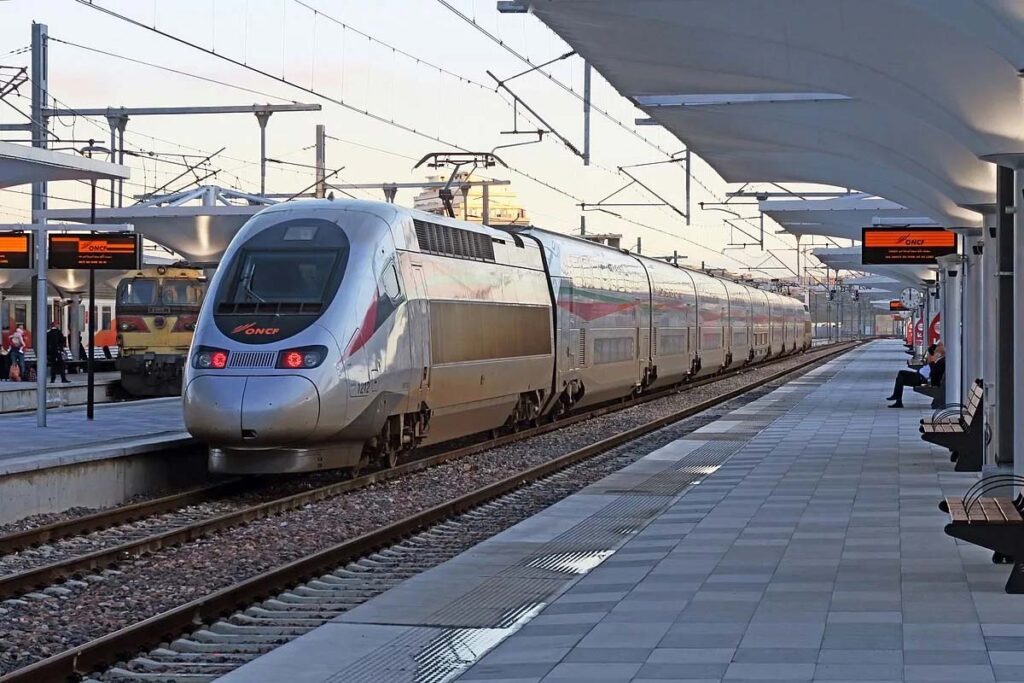
Connectivity in Morocco
Staying connected in Morocco is relatively easy and affordable. Upon arrival, you’ll find mobile kiosks at airports and major cities offering prepaid SIM cards from the country’s top providers—Orange, Maroc Telecom, and Inwi. These companies provide reliable 4G coverage across most urban and rural areas, though remote desert locations may have limited service.
You can purchase SIM cards for as little as $5–$10, often with 5GB or more of data included. Topping up is simple and can be done at local shops or online. Make sure your phone is unlocked before travel. If you’re tech-savvy or want to save time, some networks now offer eSIM compatibility—ideal for travelers who don’t want to swap out physical SIM cards.
Wi-Fi is widely available in hotels, cafes, riads, and even some public parks in cities. However, speeds may vary, and in rural regions, it can be slower or unstable. If you rely heavily on internet access, a local SIM with data is your best bet for seamless connectivity.
Safety and Health Tips for Travelers
Staying Safe in Cities and Rural Areas
Morocco is considered a safe destination, especially in tourist zones, but a few precautions can enhance your safety. In cities, be cautious in crowded areas such as souks, public transport, and festivals, where pickpocketing may occur. Avoid walking alone late at night in poorly lit or unfamiliar neighborhoods.
In rural areas, crime is extremely rare, but it’s still smart to stay alert. If hiking or trekking, especially in the Atlas Mountains, hire a local guide and inform someone of your itinerary. Always have a fully charged phone with local emergency contacts saved.
Female travelers may receive occasional unwanted attention. Wearing modest clothing and walking with confidence helps mitigate this. For everyone, it’s advised to avoid discussing sensitive topics like politics or religion in public.
Travel Tips for Solo Female Travelers
Morocco can be a rewarding destination for solo female travelers, but it comes with unique considerations. While most visits are trouble-free, some extra caution is warranted. Here are some practical tips:
- Dress Modestly: Covering shoulders, cleavage, and knees helps avoid unwanted attention.
- Avoid Walking Alone at Night: Stick to well-lit, populated areas and avoid alleys or isolated streets.
- Confidence is Key: Walk purposefully and avoid engaging in unnecessary small talk with strangers.
- Use Reputable Guides and Tours: These ensure safety and enrich your travel experience.
- Stay in Female-Friendly Accommodations: Many riads are run by women and are welcoming and secure.
- Download Offline Maps: In case you lose signal or need to reroute.
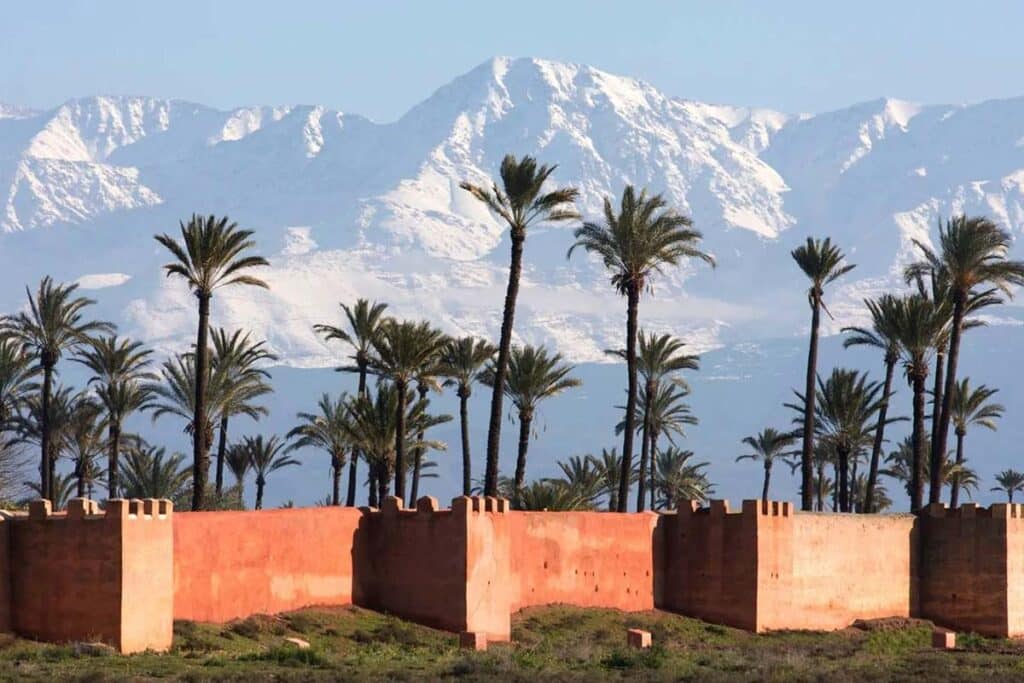
LGBTQ Travel Safety in Morocco
Morocco is a conservative country where same-sex relationships are criminalized under Article 489 of the Penal Code. While public displays of affection are discouraged even for heterosexual couples, it’s particularly sensitive for LGBTQ travelers.
That said, many LGBTQ tourists visit Morocco without incident, especially when discretion is exercised. Keep intimacy private, avoid affectionate gestures in public, and be mindful of local laws and customs.
Big cities like Marrakech and Casablanca tend to be more tolerant and cosmopolitan, but rural and conservative regions require extra caution. Booking LGBTQ-friendly accommodations and choosing open-minded guides can help ensure a safe and enjoyable experience.
Health Precautions and Vaccinations
Before traveling to Morocco, ensure you’re up-to-date on routine vaccinations such as MMR, tetanus, and polio. Additionally, hepatitis A and typhoid are recommended due to potential exposure through food and water. If you plan on visiting remote areas or staying for an extended period, hepatitis B and rabies vaccinations may also be advised.
Healthcare in cities is generally good, with many clinics and pharmacies available. However, rural areas may lack proper medical facilities. Always carry a small first-aid kit, hand sanitizer, and any necessary prescriptions.
Drinking bottled or filtered water is advised to avoid stomach issues. Wash fruits and vegetables thoroughly and opt for cooked food from reputable vendors. Travel insurance covering medical care and emergency evacuation is strongly recommended.
Before traveling, it’s important to review the most current safety information. You can check the official Morocco Travel Advisory from the U.S. Department of State for the latest updates on security, health, and entry requirements.
Shopping and Souvenirs in Morocco
Best Markets and What to Buy
Souks and markets are an integral part of Moroccan culture, and shopping here is an adventure. Marrakech’s Jemaa El-Fnaa market is one of the most famous, offering everything from lanterns and ceramics to spices and traditional clothing. Fez is known for leather goods and intricate tilework, while Essaouira is a hotspot for argan oil and woodwork.
Popular souvenirs include:
- Berber Rugs: Handmade, each rug tells a unique story.
- Leather Goods: Especially belts, bags, and poufs from Fez.
- Spices: Saffron, ras el hanout, and cumin are must-buys.
- Argan Oil: Known for its cosmetic and culinary uses.
- Pottery and Ceramics: Vibrant, hand-painted designs.
Bargaining Tips for Souks
Haggling is part of the Moroccan shopping experience. Vendors expect it, and it’s often a lively and friendly exchange. Start by offering half the initial asking price and negotiate from there. Keep it lighthearted, and don’t be afraid to walk away—often, the seller will call you back with a better offer.
It helps to visit several stalls before buying to understand the fair price. Never show too much enthusiasm for an item, and always carry small bills for easier transactions. If you’re not comfortable bargaining, some fixed-price cooperatives and government-run stores offer quality goods without the need to haggle.
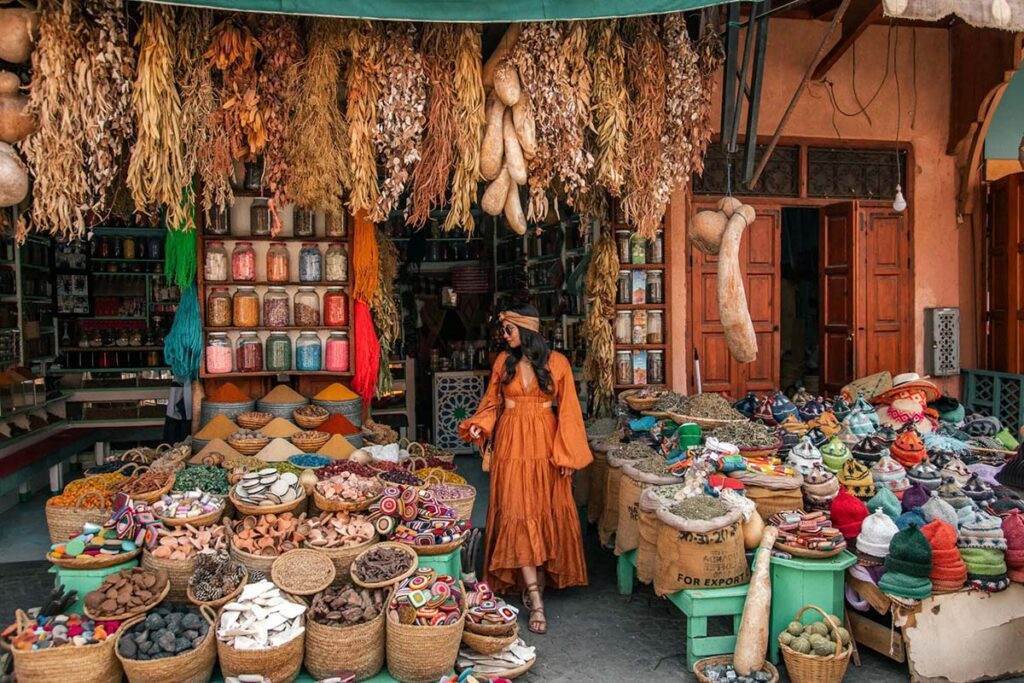
Tipping Etiquette in Morocco
Tipping, or “baksheesh,” is appreciated in Morocco and often expected in service industries. While it’s not mandatory, it’s a customary way to show appreciation for good service.
Here’s a basic guideline:
- Restaurants: 10% is standard for sit-down meals. Round up for smaller establishments.
- Cafés: Leave a few dirhams or round up the bill.
- Taxis: Not mandatory, but rounding up the fare is polite.
- Hotel Staff: 20–50 MAD for bellboys or housekeeping.
- Tour Guides: 50–100 MAD per day, depending on service quality.
- Public Toilets: 2–5 MAD as a token of appreciation.
Carry small change as larger bills may be difficult to break and aren’t always accepted for tipping.
Moroccan Festivals and Events
Major Cultural Celebrations
Morocco is rich in cultural festivals, many rooted in Islamic and Berber traditions. One of the most important is Eid al-Fitr, marking the end of Ramadan with family gatherings and feasts. Eid al-Adha, or the Festival of Sacrifice, is another key event involving community meals and prayers.
During Ramadan, the pace of life slows. While tourists are not expected to fast, showing sensitivity by avoiding eating or drinking in public during the day is appreciated.
Unique Local Festivals
Beyond national holidays, Morocco hosts fascinating regional festivals. The Imilchil Marriage Festival is a traditional Berber event where young men and women meet potential partners, accompanied by music, dance, and celebration.
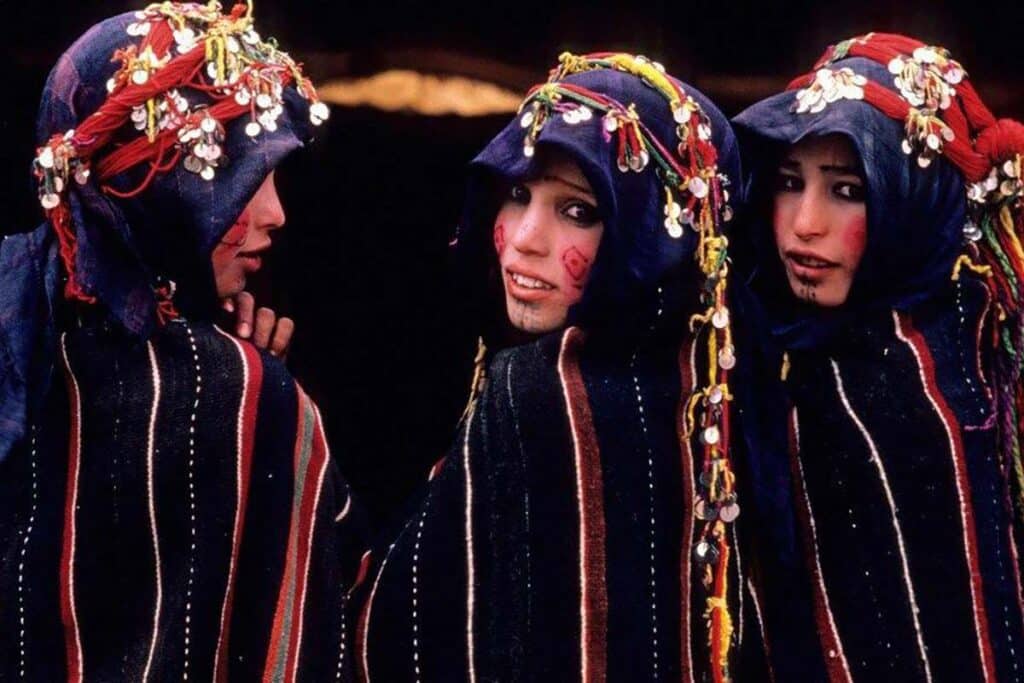
The Date Festival in Erfoud celebrates the date harvest with parades and camel races. The Rose Festival in El Kelaa M’Gouna is held in spring to celebrate the blooming of thousands of roses, featuring beauty contests and folk music.
These local festivals are immersive cultural experiences, providing a deeper connection with Morocco’s diverse heritage.
Celebrating Music and Rhythm
Morocco also hosts vibrant music festivals showcasing its eclectic musical heritage and global influences. Rabat’s Mawazine Festival attracts international stars and millions of spectators, making it one of Africa’s largest music events. Essaouira’s Gnawa World Music Festival celebrates traditional Gnawa rhythms, blending spiritual rituals with contemporary music. In Fes, the Sacred Music Festival creates a mesmerizing atmosphere of spirituality and culture, while Jazzablanca in Casablanca delivers dynamic jazz performances, attracting both local and international artists. These festivals offer memorable experiences and highlight Morocco’s rich musical diversity.
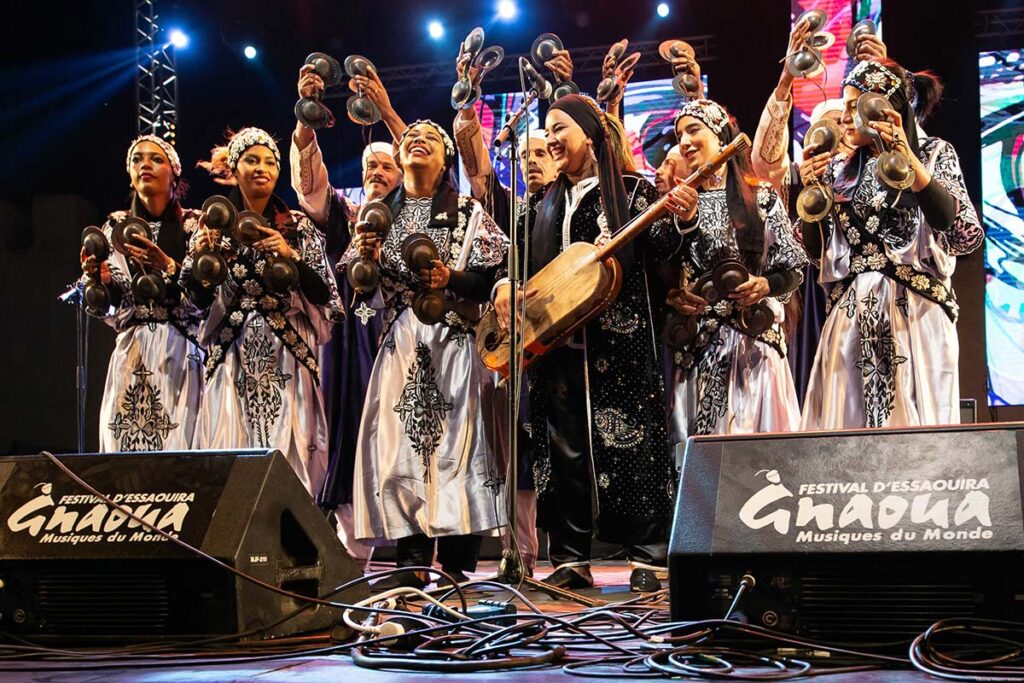
Understand Moroccan Culture and Etiquette
Dress Code and Behavior
Morocco is a Muslim-majority country with conservative values, especially in rural areas. Modest dress is recommended—women should cover shoulders and knees, and men should avoid shorts in religious or rural settings. In coastal resorts or liberal cities, attire can be more relaxed but still respectful.
Public displays of affection are frowned upon, particularly in smaller towns. Handshakes are the common form of greeting, and it’s polite to use your right hand when giving or receiving items.
Religious Customs and Respect
Islam shapes much of Moroccan life, and respecting religious practices goes a long way. During prayer times, you’ll hear the call to prayer echoing from mosques—avoid walking in front of someone praying or entering a mosque unless invited (the Hassan II Mosque is an exception open to non-Muslims).
During Ramadan, even if you’re not fasting, avoid eating, drinking, or smoking in public during daylight hours. Be patient with service delays during this time, as it’s a deeply spiritual period for locals.
When visiting religious sites or homes, always remove your shoes if asked, and avoid photographing people without permission, especially women.
Budgeting Your Morocco Trip
Average Daily Costs
Morocco offers a great balance between affordability and rich experiences. Here’s a rough daily cost estimate:
- Budget travelers: $30–$50 (dorm stays, street food, buses)
- Mid-range travelers: $60–$120 (3-star hotels, local guides, intercity trains)
- Luxury travelers: $150+ (luxury riads, private tours, fine dining)
Meals cost around $3–$5 at local eateries and $10–$25 in mid-range restaurants. Entrance fees for attractions range from $10 to $15, with guided tours costing more. Transportation via trains or buses is very affordable.
Money-Saving Tips
- Eat like a local: Street food and small restaurants offer delicious meals at low prices.
- Use public transport: Trains and buses are cheap and efficient.
- Stay in riads or hostels: More affordable and culturally enriching than hotels.
- Travel during shoulder season: Avoid visiting during spring or fall for lower prices and fewer crowds.
- Book tours locally: On-the-ground rates are often cheaper than online.
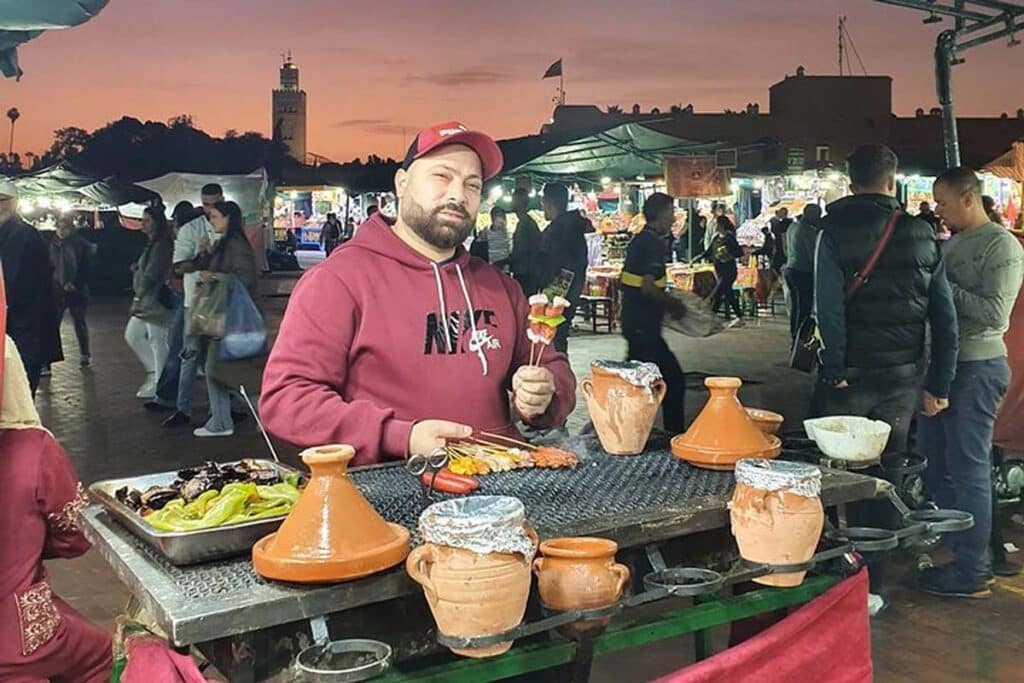
By planning smartly, you can experience the best of Morocco without breaking the bank.
Morocco Visa Requirements for Tourists
Who Needs a Visa to Enter Morocco?
When planning a trip to Morocco, one of the first things you need to check is whether you need a visa to enter. Morocco offers visa-free travel for citizens of over 70 countries for short stays, typically up to 90 days. This includes travelers from countries such as:
- United States
- United Kingdom
- Canada
- European Union nations
- Australia and New Zealand
- Japan, South Korea, and several Latin American countries
If you’re a passport holder from one of these countries, you can enter Morocco without a visa for tourism purposes. However, your passport must be valid for at least six months from your entry date. You’ll also need to show proof of onward or return travel and may be asked to provide confirmation of accommodations or a travel itinerary.
Countries That Require a Visa Before Arrival
If you are not from a visa-exempt country, you must apply for a Moroccan tourist visa in advance. This includes citizens of countries like India, Pakistan, Nigeria, and most African and some Asian nations.
The application process typically involves submitting:
- A valid passport (with at least 6 months validity)
- A completed visa application form
- Passport-size photos
- Proof of accommodation in Morocco
- A detailed travel itinerary
- Return flight booking
- Proof of financial means
Processing times vary but generally take about 5 to 10 working days. It’s recommended to apply at least 4 weeks in advance of your intended travel date.
E-Visa Option for Select Travelers
Morocco has introduced an e-visa system for citizens of some countries to simplify the process. Eligible travelers can apply online and receive their visa electronically, often within 72 hours. This option is currently available for nationals from select countries, including India and Israel, as well as Schengen visa holders in some cases.
To check your eligibility and apply, visit the official Moroccan e-visa portal.
Extending Your Stay in Morocco
If you’re already in Morocco and want to stay beyond 90 days, you must apply for an extension through the local Police des Étrangers (immigration police). Extensions are not guaranteed and can be time-consuming, so it’s better to plan your trip within the original 90-day limit or exit and re-enter after some time (check rules to avoid visa runs).
Ready to explore Morocco? Take the guesswork out of planning and discover our handpicked Morocco tours designed for every type of traveler.
FAQ’s
Yes, Morocco is generally very welcoming to American tourists. Locals are known for their hospitality, and many people speak some English, especially in tourist areas.
You should know basic cultural customs, dress modestly, prepare for bargaining in markets, and check visa and travel advisories. It’s also important to stay hydrated and use bottled water.
For first-timers, Marrakech, Fes, Chefchaouen, and the Sahara Desert are top choices. These destinations offer a perfect mix of culture, history, and stunning landscapes.
Morocco can fit most budgets. While luxury options exist, it’s generally affordable with budget-friendly accommodations, cheap local food, and inexpensive transportation.
Avoid bringing drones (unless you have special permission), revealing clothing, and valuable jewelry you don’t need. Also, avoid bringing large amounts of cash.
Yes, but alcohol is not widely available in public. You can drink in licensed hotels, restaurants, bars, and some stores, but public drunkenness is frowned upon.
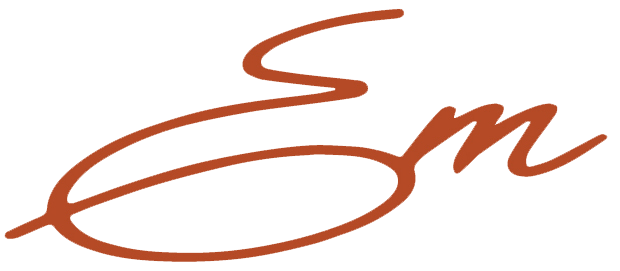



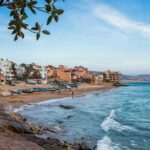
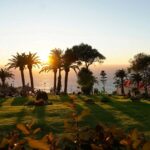
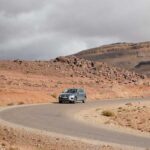


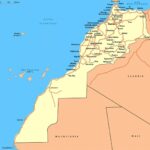

























[…] planning your trip and want a deeper look at all the must-see places, check out the detailed Morocco travel guide by Enchanting Morocco—it covers everything from top attractions and cultural tips to hidden gems […]
[…] diving into each fascinating region, you can also browse through our detailed Morocco Travel Guide to get a broader sense of everything Morocco […]
[…] Let me tell you, there’s no place like Morocco. Our country is full of life – from the Sahara dunes to the Atlas Mountains, from the ancient medinas to the colorful souks. But choosing the best time to travel to Morocco matters, because Morocco changes with the seasons. I’ll take you through what makes each time of year special – the festivals we celebrate, the places locals love, and the moments you won’t want to miss. Whether you’re dreaming of a desert sunset or a stroll through the winding streets of Fes, I’ll help you plan the trip of a lifetime. For a complete overview of how to get around, where to stay, and must-see attractions, check out this detailed trip guide to Morocco. […]
[…] more essential tips and in-depth advice on planning your journey, be sure to check out our complete Morocco Travel Guide. It covers everything from cultural etiquette to top places to visit—perfect for first-time and […]
[…] for a complete overview of what to see and do? Explore our Morocco Tour Guide for expert tips, must-visit destinations, and everything you need to plan an amazing […]
[…] Quick links: Looking for itinerary inspiration? Browse our hand‑picked Tours of Morocco. Need an overview of visas, money and culture? Jump to our extended Morocco visitor guide. […]